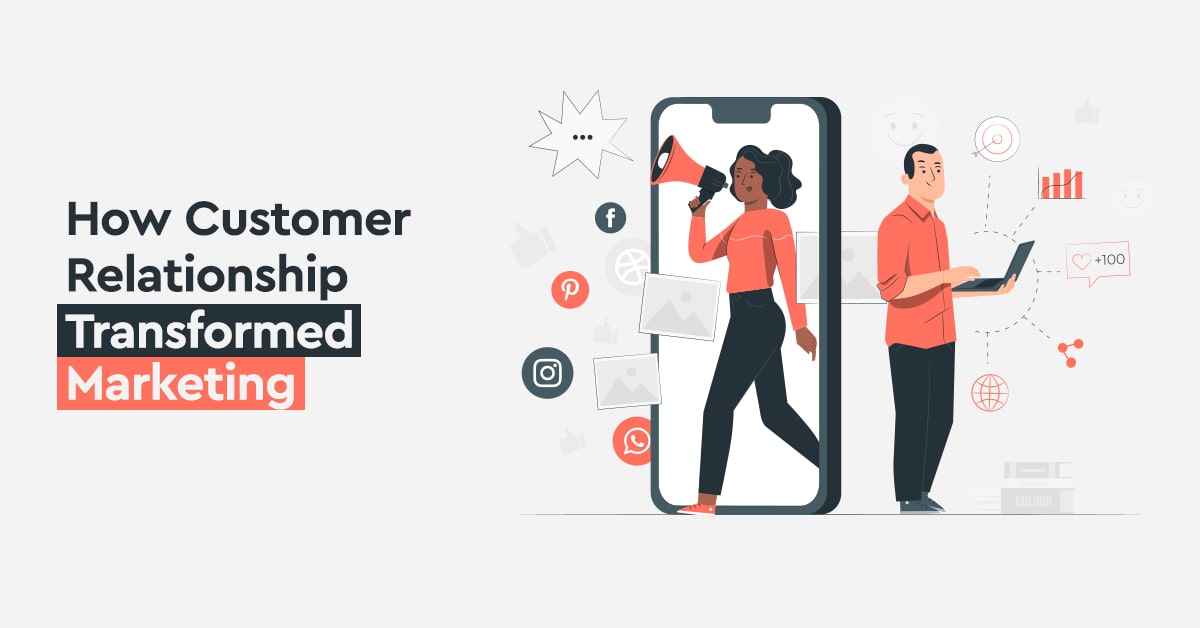How Customer Relationship Transformed Marketing

Companies that value customer experience gain 4-8% higher revenue than their competitors in their industries. They are found to be 60% more profitable than companies that don’t focus on customers. Find out what customer relationship is all about and how it transformed the way companies deal with their customers.
When companies talk about customer relationships, they usually refer to the marketing strategies a company implements to encourage customers to stay for the long haul. Customer relationship strategies aim to build loyalty and they typically require determining what customers uniquely need and want first before anything else.
However, right now, companies face roadblocks in identifying these needs and preferences. The global pandemic caused a shift in consumer preferences and changes in consumer behavior, which means that the consumer data that companies have gathered in the previous years may be rendered irrelevant.
Without the right data about your target customers, it would be hard to offer the right solutions. This puts a strain on the customer relationship. Some customers may avoid coming in contact with the business again after the business failed to address their needs and preferences.
How Customer Relationship Works

All customers start from a point where they had zero knowledge about the brand. Along the way, they come into contact with the brand via advertisements, word-of-mouth communication, or other promotional activity of the business.
This is where brand awareness starts. When the brand messaging piques their interest, they may seek more knowledge about the brand. And after weighing options, or when a need arises, they may proceed to select the brand’s product and services out from the competition.
They will then use the product. Here, an experience will be formed. If it’s a good experience, the customer may consider buying the product again in the future. In fact, they may even act as brand ambassadors, actively promoting the product and the brand to other people.
If it’s a bad experience, the customer may no longer choose the product in the future and may even discourage others from buying the product.
Customer relationship then aims to keep the customer moving from the first stage (awareness) to the last stage (advocacy). It seeks to keep customers loyal to the brand (and promote the brand to their social circles) by identifying the customer’s specific needs, offering the right solutions, and consistently offering a positive experience throughout their journey.
How Customer Relationship Transformed Marketing
Many marketers began to prioritize customer relationships after seeing successful companies implement a customer-centric model.
According to a report, 45.9% of business professionals would consider customer experience as their #1 priority for the next 5 years.
And this is because many customers now would prefer experience over anything else. In fact, according to research, 86% of customers claim that they are willing to pay more for a great customer experience.
It’s not stopping anytime. At the end of 2020, a study expects customer experience to overtake price and product as the key brand differentiator.
How to Integrate Customer Relationship in Marketing
To emphasize the concept of customer relationship when engaging customers, take note of the following:
1. Prioritize gaining customer trust
You can never build loyalty without gaining customers’ trust first. That’s why, in all things you do, always ensure that you will be able to gain the customer’s trust at the end of the day.
To do this, your products and services must be reliable. They must create a positive experience for your customers. They should be able to fix a problem or provide a solution to a challenge.
2. Understand customer’s intent
Understanding why your customers became your customers is essential in running a customer relationship marketing strategy. It helps you predict intent and anticipate the needs of your customers before they even say it.
Here, you can create a roadmap that leads to a smooth journey for the customer, leading to customer satisfaction and loyalty. Integrating technology may be necessary to speed up processes and increase service accuracy and reliability.
3. Identify opportunities through customer data
Throughout the journey of the customer, sales opportunities may arise for the business. Identifying these opportunities will not just increase revenue but may also enhance the experience for the customer.
Sending personalized offers or promotions, for example, is a way to enhance the customer experience and exceed their expectations. Gathering customer data through tools and technology is an effective way to personalize offers.
Customer Profiling with Saphyte Forms – YouTube
4. Management must agree
To enhance the customer experience, the management must first agree that this is top priority. Drafting customer-centric company policies are, therefore, necessary to ensure that employees collectively follow protocols that aim to give customers a positive experience.
These policies must also align with company goals, mission, and vision. To build genuine relationships with customers, those at the top of the organization must lead in doing so.
Transform Your Marketing
Learn more about how to use tools and technology to gather customer data and provide a personalized experience. Get in touch with our experts here at Saphyte. Click here to get started.
Curious how digital ecosystems can help improve your business?
Check out how digital ecosystems can boost your company performance by getting started here.
Book a Demo